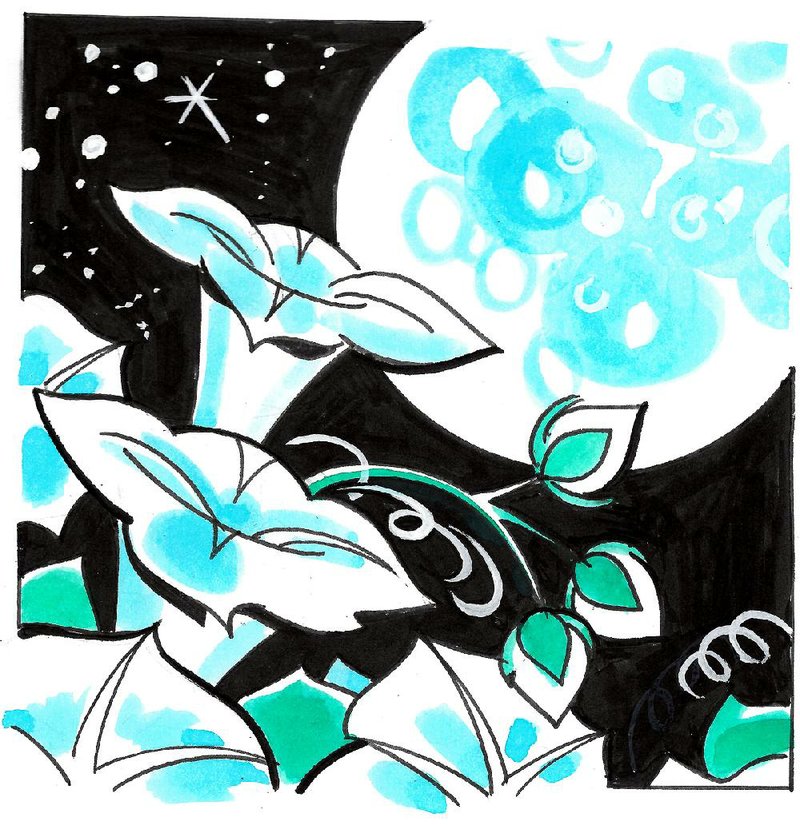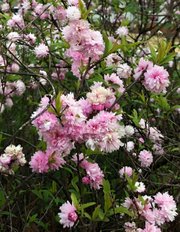Q We tried to grow moonflowers a couple of times many years ago here in Union County, but they never survived. They are a desert plant (we grew them in Tucson), so I don't know whether it's too wet here or soil is not alkaline enough. Last year we had a moonflower come up mysteriously in a spot next to the house where we have never before tried to grow one. I have no idea where it came from. But it grew about 2 feet tall, had a couple of flowers, but did not set seed. It finally died down. I just noticed this morning that it has come back. Should I get something to make the soil alkaline ... or is there something else that can be done to make our environment more accommodating?
A There are two plants commonly called moonflower. One is the annual moonflower vine which is a morning glory -- Ipomoea alba. I think the plant you are referring to is the moonflower datura --Datura inoxia. The datura is in the same genus as jimsonweed. All daturas are poisonous. Another common name is angel trumpet -- which is also the common name for brugmansia, whose large trumpet-shape blooms hang downward. The moonflower datura has large, fragrant white blooms that open at night and close when the sunlight hits them. They are a short-lived perennial and should come back from the root system for a couple of years; but they can also set some spiky seed pods. There are also some purple and double purple and white varieties.
Q We are thinking about planting a new pear tree, specifically a Kieffer variety. Is this a good time to plant, and are there other varieties that would grow well in southeastern Arkansas? If we do decide to plant, what kind of care would the new tree need, and when could we expect to see our first harvest?
A You will probably find the largest selection of edible pear trees in the spring versus in the fall, so it is a fine time to plant. Comice pears and the "Moonglow" and "Maxine" Bartlett varieties are good fruiting pears for Arkansas. Kieffer is an older, canning variety. Here is a link to our fact sheet on growing pears in the home garden: arkansasonline.com/4718pears/. They also are not invasive as are the ornamental pear trees (Bradford pear). First harvest will depend on the age of the tree you plant. Typically most fruit trees take three to seven years to begin production, depending on the species and the care.
Q Would you please tell me what this is? (The reader sent a photo.) It's growing in my front yard and I don't think I've seen it before.
A The plant in question is a flowering almond, Prunus glandulosa. It is a small, old-fashioned, deciduous shrub that is absolutely gorgeous when in bloom, but unfortunately it doesn't bloom for very long. Enjoy those light pink, double blossoms while they last.
Q Years ago (50 probably) these seemed to be in every "old" lady's yard. (The reader sent a photo.) We called them wasp bushes because they seemed to harbor stinging things and had holly-like sticker leaves. It never occurred to me these were red top/tip photinia, but I've asked at two nurseries and they both said they were; but a lady customer said it's another variety that doesn't get blight. The leaves are not smooth edged at all, and while similar, they are not the blighted plants I have had. What is this old lady wasp plant, really?
A It is Chinese photinia (Photinia serrulata), a much larger shrub than the red tip variety of photinias (Photinia x fraseri) and much more resistant to the leaf spot disease. My kids called it the stinky plant when they were young since those in our neighborhood had profuse blooms with a fairly noxious odor.
Janet B. Carson is a horticulture specialist for the University of Arkansas Cooperative Extension Service. Write to her at 2301 S. University Ave., Little Rock, Ark. 72204 or email her at
jcarson@arkansasonline.com
HomeStyle on 04/07/2018

